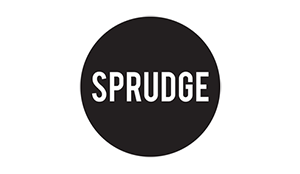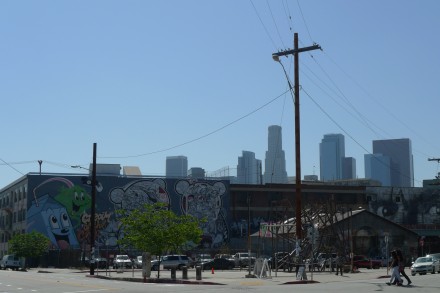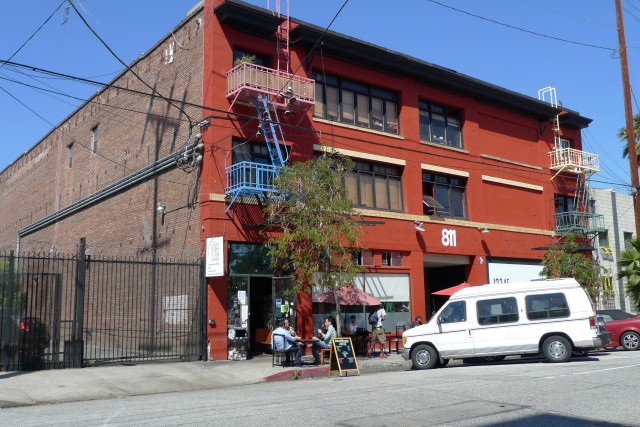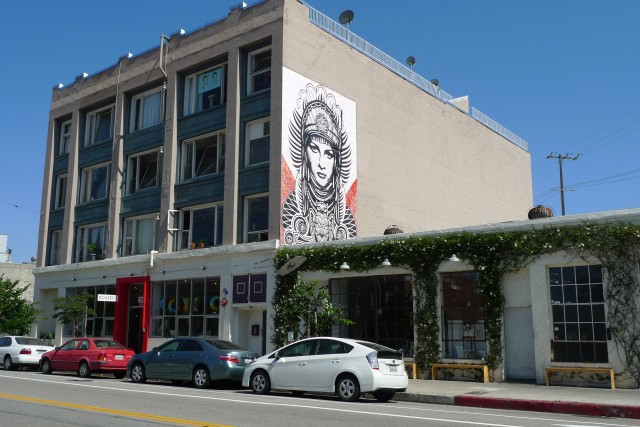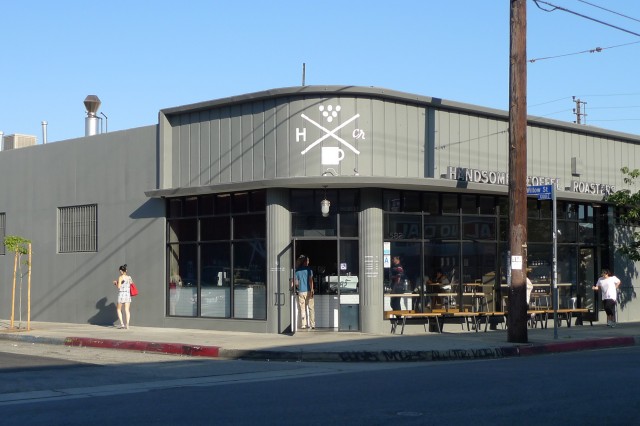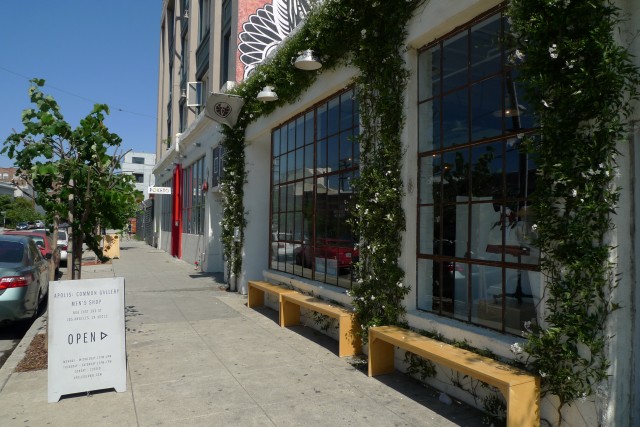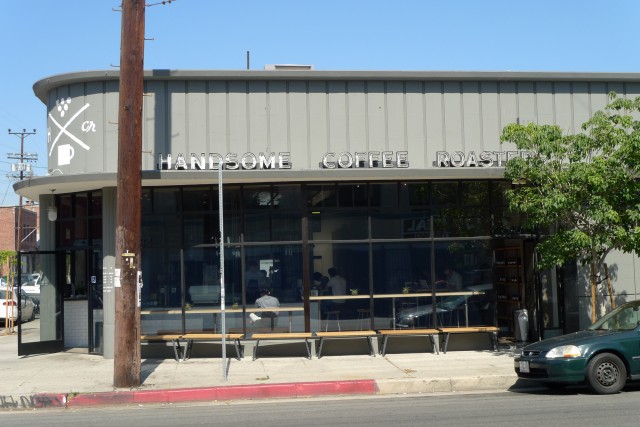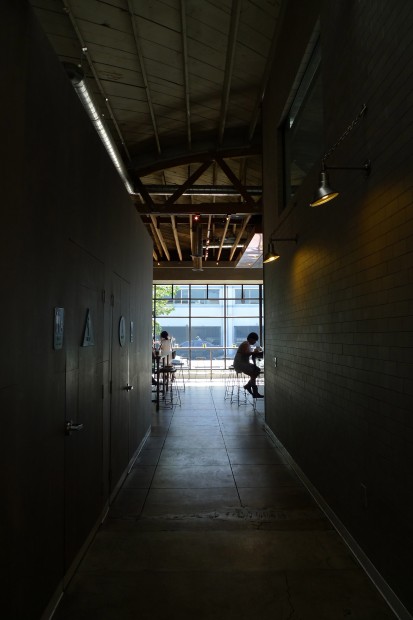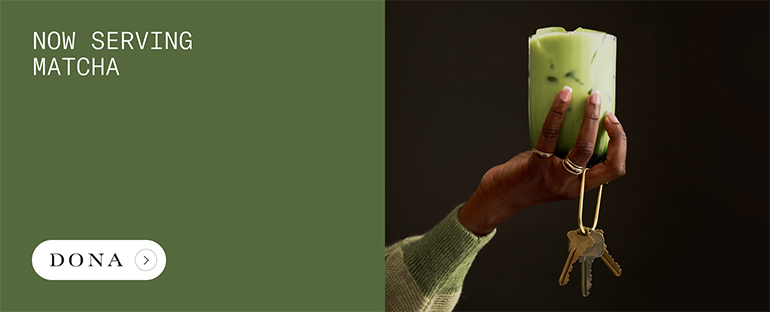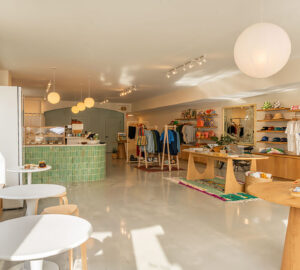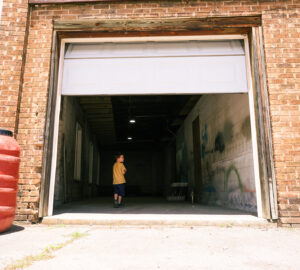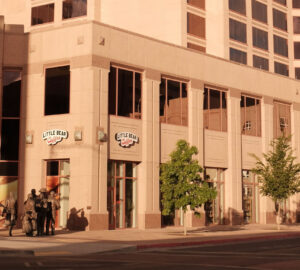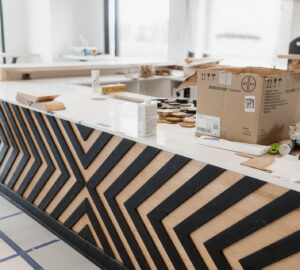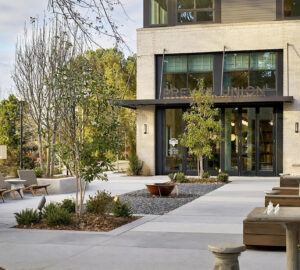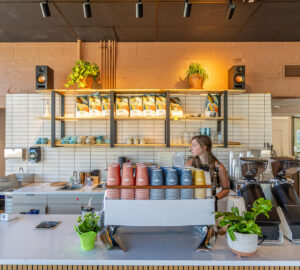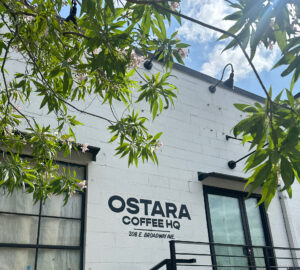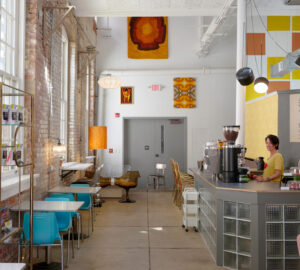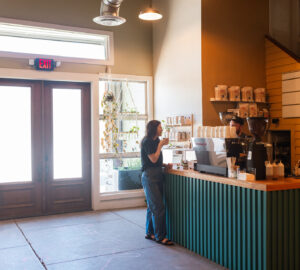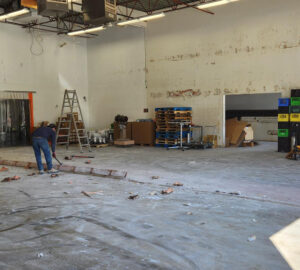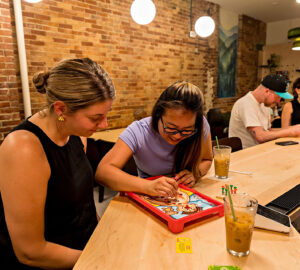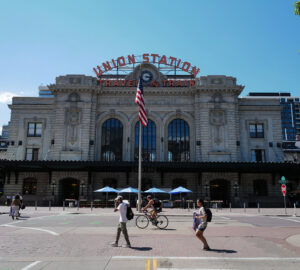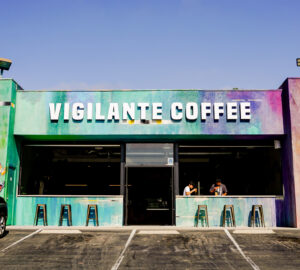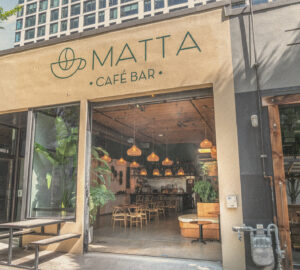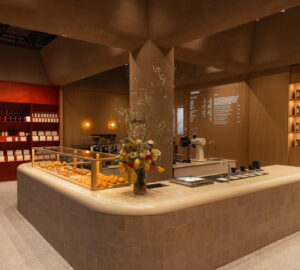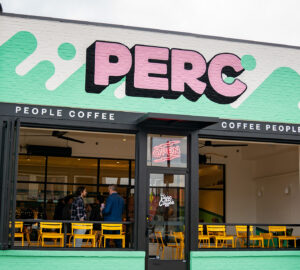At some point around a decade ago – let’s say it was the 90s, that decade is very cool right now – the Arts District in Los Angeles, just east of Little Tokyo, started to become a destination of sorts for restaurants and galleries, mostly concentrated on Vignes and Traction streets. The neighborhood doesn’t look like any popular conception of Los Angeles; it’s surrounded by manufacturing and warehouses, and has served as kind of “city set” for countless Hollywood-based productions meant to take place on the East Coast, including “It’s Always Sunny In Philadelphia”, “House”, and “NCIS: NY”. The Cornerstone Theater Company moved to the Arts District in the late 90’s, and was a kind of early harbinger for the flock of new businesses and residences that have sprung up throughout the area. LA’s Arts District is today home to the inspiring design gallery and shop Poketo, the retail space for global advocacy company Apolis: Common Gallery, plus a growing list of cool restaurants and bars. It’s also becoming a serious hub for specialty coffee, with Handsome Coffee Roasters leading the pack, and the new Stumptown Coffee roasting works well on its way.
Much of coffee’s recent growth in the Arts District has been brokered by Creative Space, a not-your-average real estate company who specialize in finding creative companies excellent work spaces. This neighborhood has become the coveted to the point that finding the perfect property to rent or buy takes some serious inside guidance. Over the last few years this company, and its founding partnership of Tyler Stonebreaker and Michael Smith, have served as those much-needed real estate guides. In the process they’ve also become ambassadors and powerful advocates for the Arts District itself.
I spent a day touring the neighborhood with Tyler Stonebreaker, beginning with a cup of coffee at Handsome Coffee Roasters. That gorgeous, much-lauded and endlessly photographed bow truss building that houses Handsome? Stonebreaker found it for them. He and I then went walking and driving around the neighborhood, checking out the future space for Zinc Café, the new home for Keep Cup Los Angeles, a just-opened cafe called Urban Radish, the past and future home of State of Unique, and a peek into the new Stumptown space.
Mr. Stonebreaker let me pick his brain throughout our afternoon together. Turns out he and his business partner Michael Smith are childhood friends, and were once both competitive tennis players. Mr. Smith has worked extensively as DJ and is the founder of The Playlist Generation, a music streaming service that works with restaurants and hotels. Mr. Stonebreaker has a real estate background and an encyclopedic knowledge of architecture and design. Both men love coffee, and are proud to be building a neighborhood destination for it in Los Angeles.
My discussion with Tyler Stonebreaker covered what is happening in the Arts District currently and what is in the works for the future. It’s a story of creative minds, eccentric personalities, passion projects, and innovation. Oh, and good coffee.
Julie Wolfson: When Tyler Wells and Michael Phillips were looking for a location in the Arts District why was it so difficult for them to find a space?
Tyler Stonebreaker: Creative companies often were finding the real estate professionals were not taking them seriously. No one took Handsome seriously. Not only that, they did not understand roasting. They did not understand how to work with the health department. Production and retail together are not allowed. You have to make a case on a case by case basis to the health department why any type of food production and retail should happen in the same facility.
You’ve been quoted by LA Weekly that the Arts District could become “The Napa Valley of Coffee.” Do you think that is a reality?
It was a little bit of a quip, but you do have a handful of coffee roasters who are interested in this neighborhood. You have Stumptown. Counter Culture is interested. La Marzocco comes down and says they want to look for a showroom space. Keep Cup from Melbourne comes in and open headquarters here in the Arts District. You start to scratch your heads a little bit. That’s interesting, why? Well, just like in Napa, you have this fertile soil, this ecosystem. There is this set of ingredients. Here you have zoning. You have old architecture. You are right next to the historic produce zone. You have a community that is supportive of this sort of craft. It was a quip, that quote, but it’s also not too much of a stretch.
Did Handsome pave the way for the ability for other coffee companies to be able to have roasting and retail in the same space?
Yes. There was a moratorium on coffee roasting from 2008 to 2010. Handsome was the first to go through the roasting approval process with AQMD, the “Air Quality” bureau at the county health department. It was really AQMD that was enforcing this moratorium. Today it’s been lifted, but there are now thirteen clearances a new roaster must pass. What is now required is an afterburner that looks like a space shuttle and burns down the exhaust to water vapor. You think that you would have a smokestack and you would smell coffee, but by the time it goes through that afterburner, it is basically just water vapor.
Now that Keep Cup and Stumptown are here, how much do you feel that will inspire other companies to consider as Arts District for retail or roasting locations? Is there enough space for everybody?
That is a really good question. I think it remains to be seen. Some of the feedback from other well-known coffee roasters that are looking at Los Angeles is that you are going to see more retail open up. Intelligentsia is likely to expand. Blue Bottle is likely going to come down here. You’ve got G&B at Grand Central Market. You’ve got Café Dulce in Little Tokyo and going into a more permanent space at Alameda Square. We are also working with Tonx. You have the beginnings of more coffee retail in and around this neighborhood. It’s more about the right environment, zoning, facility, and economics.
How do all of the coffee companies find you?
There is a community. The idea is that everyone rises as artisanal third wave coffee becomes more recognized. It’s been a very community driven process. Tyler Wells and Michael Phillips have introduced us to over a dozen coffee companies including Yeekai Lim from Cognoscenti.
Did you help Yeekai secure his Culver City location?
Originally we brought Handsome over there. Focus on retail was important there and being able to provide a broader menu. So when we started working with Clive Wilkinson and started talking about what he wanted. He just wanted a really great coffee shop. Tyler Wells said Yeekai would be great. We brought Yeekai down, introduced him to Clive and started the conversation. There is a common sensibility because of their design backgrounds and their modern forward thinking views on design. There was compatibility there.
Did you give some extra effort on the Handsome project knowing it would help tell the story of the possibilities in the Arts District?
Handsome called hundreds of times to numbers on all signs around the Arts District. No one called them back. None of the industrial owners or brokers that historically worked in this neighborhood had any clue what artisanal coffee was and did not care to respond. Tyler got frustrated and ended up in Hollywood, which was their backup option, and found a broker that was more than willing to help them find a location. The day Tyler was going to sign the lease, he went to the city himself. They were about to sign their lives away, but he was told there was a problem. The city told him that even though it was legally allowed by zoning at that location in Hollywood, the city was still going to decline their permitting. He was told that coffee roasting is not allowed.
Then how did you meet Tyler Wells?
That same day, they felt the world has crashed underneath them, they called around frantic, looking for a backup. They called a sign that happened to be one of the biggest property owners in the media district in Hollywood – and I happen to know their head of leasing really well. She would always refer people to us, knowing that we knew how to work with creative companies. So they came into our office that day at 3:00pm in the afternoon and told us what had just happened. They were pretty upset.
We asked, ‘What would you ideally want?’ There were no doubts on their end; they really wanted to be in the Arts District. They’d also need at least 3500 square feet, 200 amps of power, concrete floors and would love a bow truss ceiling. They told me, ‘We’d love a storefront and we’d love to be on a corner.’ That’s basically it. Ideally they’d also want a long-term lease and participation by a landlord.
So turns out, we knew of this building. It was the only building in the neighborhood that was available and met their criteria. That next day at 9:00am we met there, at what’s now the Handsome Coffee HQ on Mateo. The property owner happened to drink coffee and be involved in art, and he got their vision for Handsome right away. He was willing to listen when most property owners would not.
Do you feel that the local property owners are seeing what is happening at Handsome? Is it helping change people’s perception in the Arts District about whom they may or may not want to rent to?
Yes and no. I think the problem with property owners down here is… it’s a motley crew of people. It’s the hardest part of what we do, but it’s also what makes it interesting. For all of these constraints, some natural, some manmade, the property owners down here have a certain viewpoint. They may say they want to work with any given client.
But for coffee specifically, I can say the owner we worked with down here definitely wanted Stumptown. We were introduced to Matt Lounsbury (director of operations at Stumptown) through a concert promoter that does the FYF Festival. Stumptown was going to be a sponsor but they hadn’t gotten a facility yet. So the promoter, who we work with, made that introduction for us. Stumptown was ideally looking for a building on 3rd Street; we knew all the issues with unreinforced masonry, zoning, and all the rest through our experience with Handsome, so I felt confident we could help.
Matt was in town, we met up, and he told us more what he was looking for. Turns out, we know this building…it’s pretty much the only one that fits their requirements in that neighborhood, plus it’s on the market, though you would never know about it because it’s not getting pushed hard. So we go there together. It used to be a garment manufacturing shop, and for whatever reason the back door was open. Matt looked at it and said “Holy shit,” and that was pretty much it.
City wrangling stuff has taken forever, because of the original masonry and also because there’s no parking lot, which means we had to work with the city on a lot of different levels. The reason I knew about that building was because we’ve found several spaces for other clients in the buildings on either side of it. And sometimes it’s about scouting properties for a long time, and being the first call when they go available.
As a last question, why coffee here? Why in the Arts District?
Coffee is omnipresent. It is an everyday ritual for people. I think the idea of a neighborhood like this is that it is driven by craft and art. For forward thinking coffee professionals whether it is serving coffee, roasting coffee, distributing coffee, displaying coffee, it just fits.
Julie Wolfson (@JulieWolfson) is a staff writer for Sprudge.com, and heads our LA desk. Read more Julie Wolfson here.
